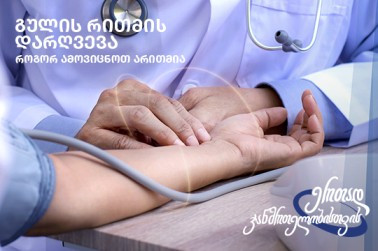


Blog
Urologic diseases - diagnosis and treatment
27 January 2020

Urologic diseases are pathologies of the genitourinary system, which may have different natures and origins. Diseases of a urological nature include toxic lesions, injuries, inflammatory processes, as well as pathological changes in the kidneys, bladder, urethra, prostate, ureters, and external male genital organs. According to statistics, the number urologic diseases in recent years has increased by almost 20%.
Diagnosis and treatment of diseases of the genitourinary system primarily depend on the disease itself and its stage. Standard diagnostic steps at the initial stage usually include the collection of medical history (medical information), ultrasound, x-ray examination, and laboratory tests (blood and urine tests, smears on the flora, biopsy, etc.) Treatment is prescribed by a doctor based on the diagnostic results and may be medication, surgical or complex.
Urologic diseases require immediate medical attention, as they can easily and quickly turn into a chronic form and lead to more serious consequences.
Here are the most common STDs nowadays:
Treatment of male urologic diseases at the Caucasus Medical Center in Georgia
If you have one or another urologic disease, and you have decided to undergo treatment abroad, then the Caucasus Medical Center is undoubtedly the right choice.
Urology at the Caucasus Medical Center is one of the leading and main directions. The urologic department of our clinic has a high reputation in the international community due to the professionalism of doctors, as well as cutting-edge technologies and equipment.
Hospital is ready to provide both planned and immediate care to patients with urologic diseases: in a hospital that is equipped with the most modern diagnostic, laboratory and surgical equipment, specialists offer a wide range of services for the diagnosis and treatment of diseases of the genitourinary system.
Highly qualified specialists with international experience at the Caucasus Medical Center successfully perform the following manipulations:
Diagnosis and treatment of diseases of the genitourinary system primarily depend on the disease itself and its stage. Standard diagnostic steps at the initial stage usually include the collection of medical history (medical information), ultrasound, x-ray examination, and laboratory tests (blood and urine tests, smears on the flora, biopsy, etc.) Treatment is prescribed by a doctor based on the diagnostic results and may be medication, surgical or complex.
Urologic diseases require immediate medical attention, as they can easily and quickly turn into a chronic form and lead to more serious consequences.
What are the most common urologic diseases?
Urologic diseases are quite common, but the most common ones are the following:- Prostatitis. Inflammation of the prostate gland is one of the three most common male pathologies and affects about 15% of men between the ages of 30 and 50;
- Prostate adenoma. The disease is characterized by an increase of a benign neoplasm in the prostate, which gradually negatively affects the quality of life of the patient;
- Prostate cancer. This is an oncological disease characterized by the growth of a tumor in the prostate and is today one of the most common types of cancer among the male population;
- Infertility. Infertility is considered a violation of reproductive function, because of which it conceiving a child becomes impossible. Quite often infertility is a consequence of past urological diseases;
- Sexual Dysfunction. There are four main male sexual functions: libido, erection, ejaculation, and orgasm. Disorder of any of them leads to a man's inability to have sexual intercourse. The causes of the disorder can be both physiological and psychological and somatic disorders;
- Varicocele - a disease characterized by dilation of the veins of the testis and spermatic cord. It can be either hereditary or develop due to constant blood pressure in a vein.
What symptoms characterize urologic diseases?
Despite the fact that each individual urologic disease has its own symptoms, there are a number of symptoms that help identify the presence of urologic diseases in general. Common symptoms of urogenital system pathologies are:- Pain. Pain is the main and primary sign of almost any urologic disease. Pain can vary in frequency (paroxysmal, periodic, constant), intensity (dull, acute), and location (lumbar region, lower abdomen, perineum, hypochondrium, etc.);
- Urination disorder. The disorder can manifest itself in different ways depending on the disease. This may be a delay, difficulty, incontinence, rapid or frequent nighttime urination;
- Change in quantity. Normally, a healthy person produces about 1.5 liters of urine per day. A significant change in its quantity is an indirect sign of a urologic disease: oliguria (a decrease in the amount, but less than 500 ml per day or polyuria (an increase in the amount of over 2 liters, sometimes more than 3 liters of urine);
- Qualitative changes. This is primarily a change in its color and transparency. Cloudy discharge of an unusual color requires immediate medical attention;
- Urethral discharge. Mucous and purulent discharge, especially in the morning.
Urologic diseases: preventive measures
- Like any other pathology, many urologic diseases are always easier to prevent than to treat. To do this, it is recommended to adhere to some preventive measures:
- Timely diagnosis and treatment of any infectious diseases that occur in the body, especially sore throat, sinusitis, infectious diseases of the gastrointestinal tract and sexually transmitted infections;
- Proper observance of the rules of personal hygiene of the genitals;
- Wearing linen made from natural materials (cotton, silk), which reduces the risk of skin irritations;
- Avoiding overwork, stress, and hypothermia;
- Compliance with the rules and hygiene of sexual life;
- A visit to urologist at least twice a year for a routine examination;
- A proper and healthy diet, which should include foods such as meat, fish, eggs, vegetables, fruits, herbs and nuts. At the same time, fried and fatty foods should be excluded, salt intake should be reduced;
- Regular fresh air walks and exercise;
- A healthy lifestyle, which means a complete rejection of alcohol and smoking;
- Proper water drinking regimen: drink at least two liters of water per day.
Male urologic diseases: effective diagnosis using modern technologies
In order to identify an urologic disease at an early stage and prescribe effective treatment, a comprehensive diagnosis is needed. Modern diagnostic measures include:- Initial examination of the patient. At this initial stage, the doctor collects an anamnesis (medical history and information about the patient's condition), examines the patient for visible physiological changes and palpates the internal organs and lymph nodes;
- Laboratory examination. These include a blood test (for the detection of inflammatory processes in the body), a urinalysis (allows studying the processes occurring in the kidneys, bladder and urinary tract), a biochemical blood test (liver and kidney tests), a spermogram (examination of sperm quality and sperm motility ), and the PSA test (for early detection of prostate cancer);
- Urodynamic testing. This is a modern examination, the purpose of which is to determine the functional condition of the urinary system. In the course of such a study, the following tests are carried out: measurement of residual urine volume, pressure-flow urodynamic study, measurement of urinary bladder volume, etc.;
- Endoscopic examinations. In the course of this study, the doctor uses a special device - an endoscope, which allows careful examination of the internal surface of the genitourinary system. An endoscope usually examines the kidneys, urethra, bladder, and ureters;
- Ultrasound diagnostics. Ultrasound of the genitourinary system is considered the main and one of the most effective methods for identifying pathologies. The main advantages of ultrasound studies are the absence of the need for contrast agents and the dependence of the results on the functional state of the kidneys;
- Radiation diagnostic methods. These are methods that are based on the use of radiopaque substances. These include computed tomography, MRI, urography, renal angiography, etc.;
Sexually transmitted urologic diseases (STDs)
Sexually transmitted diseases or infections include inflammatory and infectious urologic diseases that are transmitted from person to person during sexual intercourse. To date, more than thirty such diseases are known. Their danger lies in the fact that most often they proceed secretly, which complicates the diagnosis and subsequent treatment. All STDs divide into the following categories: bacterial infections, viral infections, protozoal infections, fungal infections, and parasitic diseases.Here are the most common STDs nowadays:
- Gonorrhea - an infectious disease characterized by acute purulent inflammation of the urethra and damage to the mucous membrane of the genitourinary system. The probability of gonorrhea transmission from a patient with an existing disease is about 50%;
- HIV (Human Immunodeficiency Virus) is a sexually transmitted virus that affects the immune system. Against the background of immunodeficiency, various serious infectious diseases develop, which can lead to serious damage to organs and systems and even cause death;
- Chlamydia is a fairly common infectious disease that affects the external genitalia, bladder and urethra. It is more often diagnosed in sexually active young men aged 20 to 35 years, and is quite easy to treat;
- Syphilis is a serious infectious disease of the genitourinary system, which, in case of an untimely treatment, can lead to damage to the entire body. Usually affects young people aged 20 to 30 years, and over the course of several years can develop completely asymptomatically.
Symptoms of Urologic Sexually Transmitted Diseases
Many sexually transmitted urologic diseases may not show signs for a long time. Sometimes several months or even years pass before the first symptoms appear. Each STD has its own symptomatology, but there are also a number of common symptoms that indirectly indicate a disease:- Unusual genital discharge;
- The appearance of a rash on the genitals;
- Swelling and redness of the genitals;
- Incessant genital itching;
- Pain sensations of varying intensity and duration;
- Enlarged lymph nodes and their pain on palpation;
- Genital odor;
- Feeling of discomfort during intercourse;
- Painful and frequent urination.
Treatment of male urologic diseases at the Caucasus Medical Center in Georgia
If you have one or another urologic disease, and you have decided to undergo treatment abroad, then the Caucasus Medical Center is undoubtedly the right choice.
Urology at the Caucasus Medical Center is one of the leading and main directions. The urologic department of our clinic has a high reputation in the international community due to the professionalism of doctors, as well as cutting-edge technologies and equipment.
Hospital is ready to provide both planned and immediate care to patients with urologic diseases: in a hospital that is equipped with the most modern diagnostic, laboratory and surgical equipment, specialists offer a wide range of services for the diagnosis and treatment of diseases of the genitourinary system.
Highly qualified specialists with international experience at the Caucasus Medical Center successfully perform the following manipulations:
- Endoscopic procedures aimed at removing kidney stones;
- Treatment of prostate adenoma with medication, laparoscopic and endoscopic methods;
- Endoscopic treatment of cancer of the upper urinary tract and bladder;
- Treatment of prostate cancer;
- Early stage kidney cancer treatment using laparoscopy;
- Plastic surgery of the ureter;
- Emergency care and urgent urological interventions within 24 hours after referral.
Other Blogposts

Explore Now
სიცოცხლის რიტმი: რა უნდა ვიცოდეთ გულის არითმიის შესახებ?
18 July 2024
არითმია, ანუ არარეგულარული გულისცემა, გულის ნორმალური რიტმის ნებისმიერი ტიპის დარღვევას ეწოდება. ფიზიოლოგიურად გულისცემის სიხშირე შეიძლება გაიზარდოს ფიზიკური აქტივობის შესაბამისად ან შემცირდეს მოსვენებისა და ძილის დროს. ასევე, გულისცემის გამოტოვების იშვიათი შეგრძნება, უმეტესწილად არ უკავშირდება პათოლოგიურ ცვლილებებს, თუმცა, ხშირი არარეგულარული რითმი ძირითადად მიგვანიშნებს არითმიებზე, რა დროსაც გულისცემის პათოლოგიური ცვლილების გამო, ორგანოები ვერ მარაგდება საკმარისი რაოდენობის სისხლით.

Explore Now
ბავშვი ინსულტის დიაგნოზით: 13 წლის მოზარდის განკურნების ისტორია
05 October 2022
2022 წლის დადგომას ველოდით. ალექსანდრესთან ერთად ნაძვის ხის აწყობას ვგეგმავდით. მოულოდნელად, მისი ოთახიდან უცნაური ხმები შემომესმა. სასწრაფოდ შევაღე კარი და ვნახე სრულიად გაშეშებული ჩემი შვილი, რომელიც ერთ წერტილში იყურებოდა და უემოციოდ იჯდა. მან ჩვენი ყურადღების მიქცევა მხოლოდ ხელების ოდნავი მოძრაობით შეძლო.

Explore Now
Benefits of a screening center
15 November 2021
Caucasus Medical Center plays a huge role in the development of the screening center. Here, diagnostics are performed using modern high-tech devices and the error is minimized. Also, the screening center is distinguished by the team of multidisciplinary doctors. With their joint involvement, the treatment issues of the patients are discussed.



